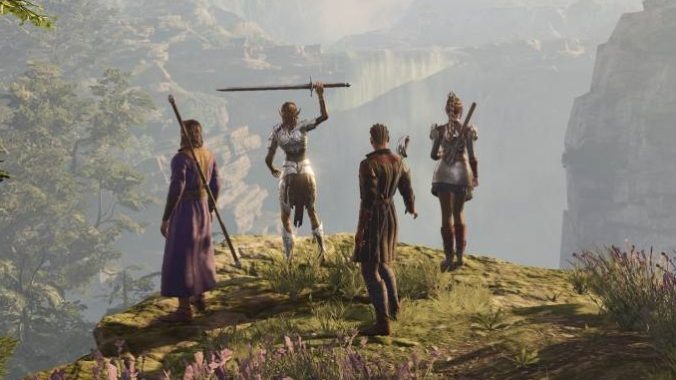A recurring theme with multiclassing is the idea of a “dip class,” or taking one to two levels in a class for a specific benefit and then continuing to level up your main class. While it differs from Dungeons & Dragons’ Fifth Edition in that the level cap is 12 instead of 20, the same principles still apply.
An excellent example of a dip class is starting as a Fighter for a future Wizard. It doesn’t sound like it would work on paper, but starting with fighter allows the future wizard player to use heavy armor and shields, boosting their survivability while at the cost of slightly delayed spellcasting progression. By taking a single level in Fighter, you take yourself from a glass cannon to just a cannon potentially.
Go for Classes with Similar Ability Scores.
Picking a group of classes that require multiple different ability scores to function will leave your character stretched thin in terms of functionality. The quintessential example is the theoretical Paladin/Monk multiclass which requires nearly every single stat to be high. It needs Strength or Dexterity to be high for attacks and Armor Class, Constitution for health, Wisdom for the Monk’s ki abilities, and Charisma for the Paladin’s spellcasting.
By contrast, combinations like the infamous Warlock/Paladin multiclass work incredibly well due to their shared Charisma casting, which means that the additional spells won’t lose any efficiency due to requiring another stat. While you may lose out on certain features from not going all the way in one of the classes, the loss won’t sting as much if you don’t have to worry about an additional stat.
Learn the Intricacies and Various Specifics.
Multiclassing also has all sorts of intricacies when it comes to certain features shared between classes. In D&D 5E the interaction between multiclassing and spell slots is so complex that there are calculators online to determine how many spell slots you have. This doesn’t even get into specific classes like the Warlock who has a separate group of spell slots that restore on a short rest versus every other class regaining slots on a long rest.
Not all aspects between classes are shared. Some proficiencies are only gained by starting in a class, which leads to some unintuitive combinations like taking your first level as a Fighter so you can have heavy armor as a Wizard. Extra Attacks and additional uses of the Channel Divinity feature from different sources don’t stack either. It’s not the most straightforward process, but it’s easily remedied with some research and forethought.
Have Fun and Experiment
On the upside, with the cost of changing classes being a measly 100 gold, players aren’t eternally damned if they end up with a build they don’t like. With how easy it is to respec, finding out what works and doesn’t work is easier in Baldur’s Gate 3 than in the pen-and-paper original. It can seem daunting at first, but the sheer amount of freedom the game allows players means it’s easy to have the perfect build for all of your roleplaying needs.
Want a Bard who has signed a deal with a devil? Who doesn’t! Want a Cleric who can wild shape into a bear? That works! Baldur’s Gate 3 doesn’t even have a stat restriction on taking classes, so you could even be a low-intelligence Wizard/Fighter multiclass if you wanted to. Just a big ol’ dumbo who can shoot magic missiles from their fingers. There’s no practical reason to do so, but the option is there!
Multiclassing in Baldur’s Gate 3 is complex, but it allows for even more freedom of character choice and potential roleplay opportunities for those that choose to learn the mechanics. It can be a deeply rewarding way to play this massive game, but if you decide to try it out, make sure you do it smartly.
Read more about Baldur’s Gate 3.
Desmond Leake is a former intern for Paste‘s games section.
